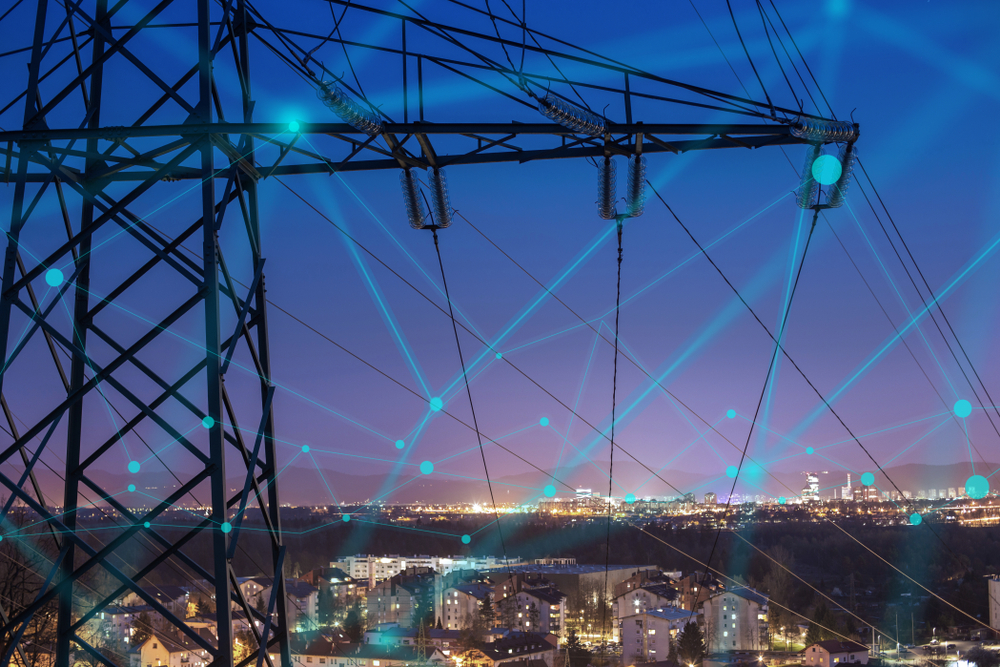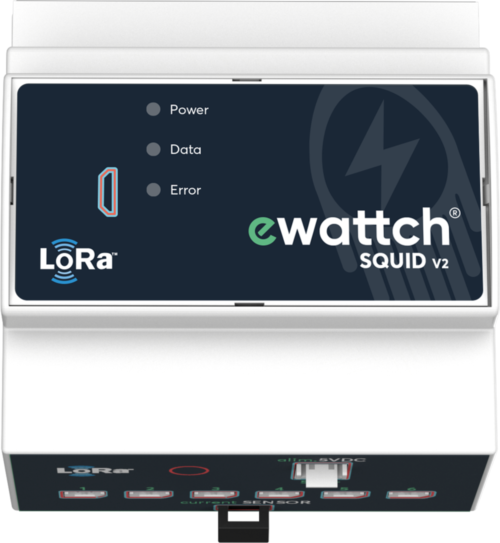The BACS decree sets essential standards for building automation and energy management. This article will help you understand the key terms, the legal obligations, and the steps to follow to ensure compliance with these new rules. You'll also discover innovative solutions, quick and easy to install, for building automation and management (BAM) in line with these requirements.
BACS and BMS, deciphering key terms
What is a BACS?
A BACS, or Building Automation and Control System, is an automated system that regulates and monitors a building's various energy systems, such as heating, ventilation and air conditioning (HVAC). The main aim of BACS is to optimize energy efficiency by controlling these systems intelligently and centrally, thereby reducing energy consumption and improving occupant comfort.
What is GTB?
Building Management Systems (BMS) encompass all the tools and devices used to control, supervise and optimize a building's technical installations. It enables greater responsiveness in the event of a problem, and optimizes energy performance through centralized management. There are different classes of BMS (class A, B, C or C) defined by standard EN ISO 52120-1, ranging from the most basic solutions to the most complex, capable of managing large multi-site buildings. These classes range from the most energy-efficient systems (class A) to the most energy-intensive (class D). In other words, the best-performing devices are those capable of intelligent, integrated management of all infrastructure systems, including energy, security and telecommunications.
BACS and GTB in a nutshell
BACS and BMS are two complementary components of the same strategy to improve the management of a building's energy resources. BACS focuses on theautomation and control of energy systems to improve their efficiency. BMS, on the other hand, is a more global system that integrates the management of energy devices (such as those controlled by BACS) with other technical devices in the building, enabling the overall operation of the infrastructure to be supervised.
In practice, a BMS can include one or more BACS systems to manage the various technical aspects of a building.

What is the BACS decree?
The BACS decree, in line with European regulations on energy efficiency, requires non-residential buildings to equip themselves with automated management systems to improve their energy performance. Published in July 2020, this decree is part of a series of legislative measures aimed at achieving the objectives of the European Union's energy-climate package.
What are the objectives of the BACS GTB decree?
The central aim of the BACS decree is to enhance the energy efficiency of commercial buildings by requiring the integration of automation and control systems for technical equipment. The aim of these regulations is threefold. Firstly, it aims to significantly reduce the energy consumption of buildings. Secondly, the decree seeks to improve the transparency and traceability of energy performance by requiring continuous, detailed monitoring of consumption data. Lastly, it is part of an approach based onadaptability andinnovation, with a view to ensuring the sustainability of installations and better management of resources in the long term.
In addition to guaranteeing regulatory compliance, these measures are designed to encourage proactive energy management, thereby helping to reduce greenhouse gas emissions, control energy costs and improve occupant comfort.
What are the links between the BACS decree and the tertiary decree?
The BACS decree complements the tertiary sector decree by introducing specific obligations concerning building automation and technical management. While the tertiary sector decree imposes reductions in energy consumption in tertiary buildings, the BACS decree specifies the tools to be put in place to achieve these objectives, notably through the installation of BACS systems.
Who is affected by the BACS decree?
The BACS decree applies to all non-residential buildings, whether commercial or not, whose heating, ventilation and air-conditioning (HVAC) systems reach or exceed a rated output of 70 kW. This regulation applies to both existing and newly-constructed buildings, and requires owners or managers of these buildings to install automated management systems by January 1, 2027 to improve their energy efficiency. For existing buildings with systems rated at more than 290 kW, the deadline is January 1, 2025. Certain derogations may apply for buildings where the payback time (TRI) for installing a BACS exceeds 10 years.
What are the legal requirements of the BACS GTB decree?
The BACS decree requires technical installations such as heating, air conditioning, ventilation, domestic hot water production, integrated lighting and electricity production to be connected to a BACS. This BMS must meet several key requirements:
- Continuous monitoring and analysis of energy data: The system must be capable of continuously monitoring, recording and analyzing data relating to the energy consumption of the building's various installations. This data must be kept for at least five years, enabling parameters to be adjusted to optimize energy performance.
- Energy efficiency assessment: BACS must be able to compare the building's energy efficiency with predefined reference values, enabling improvements or deteriorations in performance to be measured over time.
- Interoperability with existing technical systems: BACS must be able to communicate and operate in harmony with other technical systems already installed in the building. This means that the system must be able to exchange information with this equipment, to ensure coherent, integrated management of all the building's installations. This interoperability ensures that all systems work together optimally, without requiring major modifications to existing infrastructures.
- Autonomous system management and manual shutdown: BACS must enable both autonomous management of technical systems, for optimized operation at all times, and manual shutdown when necessary, offering operational flexibility.
- Mandatory inspections: The decree requires BACS systems to be inspected at least every five years. These inspections are essential to assess the system's compliance and operating condition, and to provide recommendations for improvements to maintain or increase the building's energy efficiency.
Steps to follow to comply with the BACS decree
Complying with the BACS decree is simpler than it sounds. By following a few simple steps, you can quickly set up an efficient, cost-effective BMS. Here's how:
- Audit of existing systems: Before implementing a BMS, it is crucial to carry out a complete audit of existing systems to identify areas for improvement and define priorities.
- Choosing the right technologies: Select BACS technologies that meet the requirements of the decree. It's important to choose systems that can be upgraded to incorporate future innovations. Ewattch solutions fully meet these criteria and can be adapted to the specific needs of all types of building.
- Integration and configuration of BACS systems: Once the technologies have been chosen, they need to be installed and configured. This includes configuring the systems to meet the monitoring and control requirements defined by the decree. In particular, Ewattch's devices and platform are designed for simplified deployment and intuitive use.
- Data analysis: BACS systems must be able to analyze the data collected in real time to optimize energy consumption. This analysis enables continuous adjustment of system operation to maximize energy savings.
- Monitoring and ongoing maintenance: After installation, it is essential to set up a monitoring and maintenance program to ensure that BACS systems operate optimally over the long term.
Ewattch equips you for a BACS-compliant BMS
Ewattch offers comprehensive, intuitive solutions to ensure building compliance with the BACS decree, providing reliable tools to implement efficient, simplified building management systems (BMS). Thanks to our connected devices and our EwattchCloud platform, you can monitor, analyze and optimize the energy consumption of your facilities in real time. Installation is quick and non-intrusive, guaranteeing immediate results and full interoperability with your existing equipment. When you choose Ewattch, you're investing in a scalable solution that reduces your energy costs while improving occupant comfort and the overall performance of your building.
- Connected devices: Our solutions include electricity sub-meters designed to segment and analyze energy consumption by zone and equipment. Thanks to its compatibility with long-range LoRaWAN technology, it ensures reliable data transmission even in the largest or most complex environments. The device not only monitors power consumption, but also precisely identifies areas of waste and energy-hungry equipment, facilitating the implementation of targeted optimization strategies. Squid is particularly well-suited to commercial and industrial installations, where it contributes to fine-tuned, proactive energy management.
- Fast installation: Our systems integrate seamlessly into your existing installations, without the need for additional equipment. Thanks to their wireless technology, installation takes an average of 1-2 hours, without interrupting your daily activities.
- Fast results: Our solutions are operational as soon as they are installed, with a return on investment generally achieved between 12 and 14 months, depending on the devices installed and the size of your buildings.
- Simple, intuitive management platform: EwattchCloud, our central data analysis platform, is compatible with a variety of control and monitoring applications. Easy to use and configure, it's backed by Ewattch support to help you make it your own. The platform offers infinite possibilities for customization to meet your specific needs.
Beyond bonds, a profitable investment for companies
Complying with the BACS GTB decree isn't just a regulatory issue. It's also an opportunity to make the most of your investment by improving the energy efficiency of your buildings, which translates into substantial savings on energy bills.
- Energy savings: Installing BACS systems can significantly reduce energy consumption, which has a direct impact on your operating costs.
- Improved service continuity and building operation: Automated systems guarantee optimal, continuous operation of technical installations, minimizing the risk of breakdowns.
- Enhancing the value of property assets: An energy-efficient building increases in value, which is an asset when it comes to resale or rental.
- Compatibility with new green financing: More and more financing is available for energy efficiency projects, which can reduce the cost of your initial investment.
- Significant improvement in occupant comfort: A well-managed building provides a more comfortable environment, with better air quality and the right temperature. A comfortable, healthy workspace is not only a factor in employee satisfaction, but also a key factor in attracting and retaining talent, while strengthening the loyalty of customers and partners who visit your premises.
- CSR and brand image: By investing in sustainable technologies, you strengthen your company's image with customers and partners who are concerned about environmental issues.
Case studies
To fully understand how our solutions can transform a building's energy management, read on for our case study on the Chouchou Hotel in Paris, recently equipped by Ewattch. This Smart Hotel project perfectly illustrates the tangible benefits of integrating BACS systems and the EwattchCloud platform, both in terms of reducing costs and improving occupant comfort.





